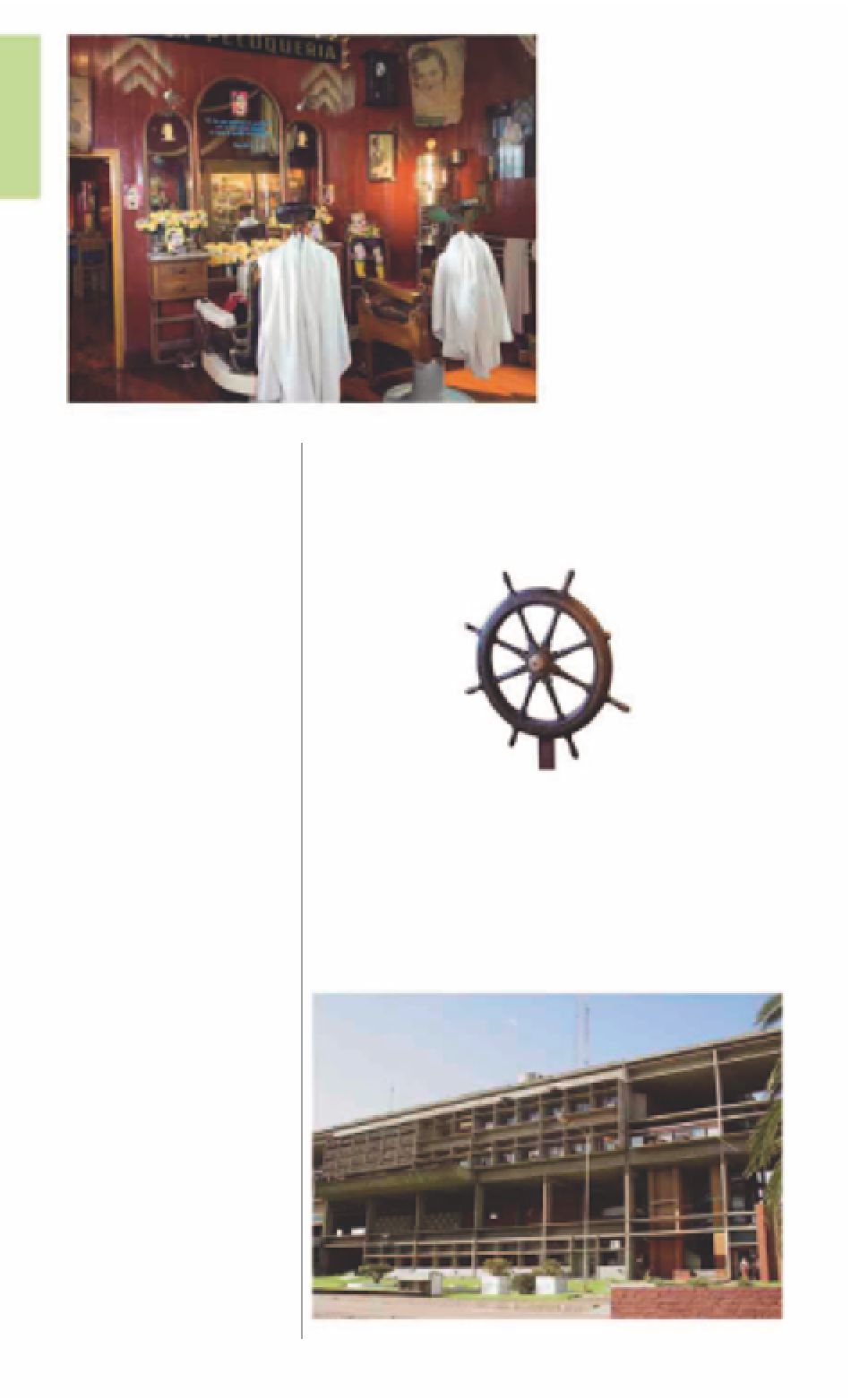Travel Reference
In-Depth Information
traditional
cantinas
serve
steaks and pastas. Every June,
bahienses
, as the locals are
known, pay homage to the
Italian saint San Silverio, the
patron saint of fishermen.
E
Museo del Puerto
Guillermo Torres 4180.
Te l
(0291) 457-
3006.
Open
8am-1pm Mon-Fri,
4-8pm Sat & Sun.
0
∑
bahiablanca.gov.ar
y
Santa Rosa
Road map
C3. 75 miles (120 km) NW
of Bahía Blanca.
*
124,000.
~
@
n
Ave Luro 400, (02954) 424-404.
Barber shop kept intact inside Museo del Puerto, Bahía Blanca
t
Bahía Blanca
Road map
C3. 235 miles (380 km) SW
of Tandil.
*
301,000.
~
@
n
Brown 1700, (0291) 481-3993.
_
Fiesta de San Silverio (Jun).
∑
bahiablanca.gov.ar
Founded in 1892 shortly after
Argentinian forces had van-
quished the native Mapuche
settlements, the city of Santa
Rosa was originally little more
than a handful of estancias,
granted to officers who
had taken part in the
Conquista del Desierto
campaign
(see p54)
.
Today, this friendly
city has grown into
an important trans-
port hub and has
two main urban
centers. The rela-
tively newer Centro
Cívico is where the
govern ment offices
and the bus terminal
are located. The more interest-
ing area is around Plaza San
Martín, where there is a quasi-
modernist cathedral, several
cafés, and
Museo Provincial de
Historia Natural
. The museum's
collection of indigenous
Rivadavia, makes for a pleasant
stroll. Located southwest of the
plaza, the Barrio Inglés, with its
red-brick semi-detached houses
built for railroad workers,
reminds visitors of the
railroad boom of the
1880s. The main
attraction in the
city is
Museo del
Puerto
, housed in
an old customs
building, dedicated
to the history and
evolution of the port.
The main exhibition is
made up of
tableaux
vivans
, mannequins of
sailors, dockworkers,
barmen, and shopkeepers, who
repre sent “local lifestyles.” The
museum's archive contains
photographs, documents, and
recorded oral histories. The
entire port quarter is worth
visiting on Sundays, when
Known as the Liverpool of
Argentina, Bahía Blanca has a
history, like the famous English
city, that is inseparable from the
sea. In 1828, a fortress was
established here, principally as a
maritime base for defending the
southern coast against Brazilian
invaders. In 1884, railroads were
laid by British firms and Bahía
enjoyed a commercial and
cultural dynamism that made
it unique on this otherwise
remote strip of Atlantic coast.
Around the same time, 12 miles
(20 km) southeast of the city,
Puerto Belgrano was created,
and today it is the country's
largest naval base.
By the end of the 19th
century, apart from being a
powerful railroad and naval
base, Bahía Blanca was boom-
ing due to grain and meat
exports. When Argentina
needed a major cargo port to
service the farms of southern
Buenos Aires, an Anglo-
Argentinian engineer named
Don Guillermo White built
wharves here which, even
today, remain the busiest
outside Buenos Aires.
The modern city is no tourist
hot spot, but Avenida Alem,
with its assortment of European
architectural styles and Plaza
Old steering wheel at
Museo del Puerto
The Centro Cívico building at Santa Rosa
For hotels and restaurants see pp278-83 and pp288-99




































